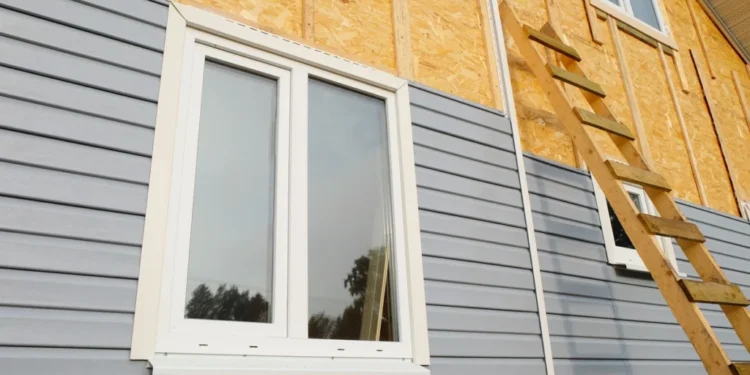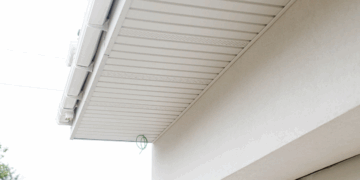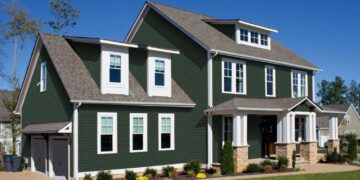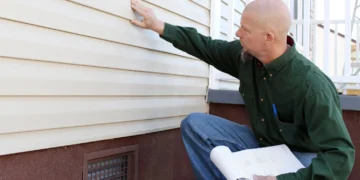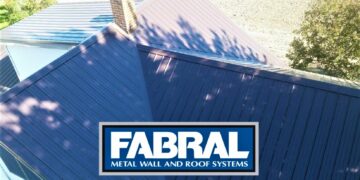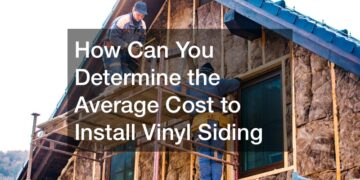Delving into the cost for new siding and windows, this introduction immerses readers in a unique and compelling narrative. It provides insights into the factors influencing costs, various materials used, and the impact of design preferences.
The discussion will shed light on how homeowners can navigate the expenses associated with these home upgrades, balancing quality with affordability.
Cost of New Siding
When considering the cost of new siding for your home, there are several factors that can influence the overall price. From the type of siding chosen to the size of the house, each element plays a role in determining the final cost.
It's important to understand these factors to make an informed decision.
Types of Siding and Price Ranges
Different types of siding come with varying price ranges. Here are some examples:
- Vinyl Siding: $3 - $7 per square foot
- Fiber Cement Siding: $5 - $12 per square foot
- Wood Siding: $6 - $15 per square foot
- Brick Siding: $8 - $20 per square foot
Size of the House and Overall Cost
The size of the house is a significant factor in determining the cost of new siding. Larger homes will require more materials and labor, leading to a higher overall cost. It's essential to consider the square footage of your home when budgeting for new siding.
Importance of Quality Materials
Quality materials are crucial when it comes to new siding. While they may come at a higher price, investing in durable and high-quality siding materials can save you money in the long run. Quality materials are more resistant to wear and tear, reducing the need for frequent repairs and replacements.
Cost of New Windows
When considering the cost of new windows, there are several factors to take into account that can influence the overall price. These include the type of material used, the size and style of the windows, the installation process, labor costs, and any additional customization options.
Here, we will delve into the various elements that impact the cost of new windows.
Window Materials and Expenses
When it comes to window materials, there are several options available, each with its own price point. Here is a comparison of the expenses associated with different window materials:
- Vinyl Windows: Vinyl windows are typically the most cost-effective option. They are durable, low-maintenance, and offer good energy efficiency. The average cost of vinyl windows can range from $150 to $600 per window, depending on the size and style.
- Wood Windows: Wood windows are known for their classic look and high insulation properties. However, they tend to be more expensive than vinyl. The average cost of wood windows can range from $300 to $800 per window.
- Fiberglass Windows: Fiberglass windows are a durable and energy-efficient option that falls between vinyl and wood in terms of cost. The average cost of fiberglass windows can range from $500 to $1,500 per window.
Additional Costs and Considerations
In addition to the cost of the windows themselves, there are other expenses to take into consideration when budgeting for new windows. These include:
- Installation: Professional window installation can add to the overall cost. Installation costs can vary depending on the complexity of the project and the number of windows being installed.
- Labor: Labor costs for window installation can also impact the total price. The amount of labor required will depend on the size and scope of the project.
- Customization: Custom features such as window grids, specialty shapes, or decorative glass can increase the cost of new windows. These personalized touches can add aesthetic value but come at an additional expense.
Energy-Efficient Windows
Energy-efficient windows are designed to reduce heat loss and minimize energy consumption, ultimately leading to cost savings on heating and cooling bills. While energy-efficient windows may have a higher upfront cost, the long-term savings on energy expenses can make them a worthwhile investment.
Factors that contribute to the pricing of energy-efficient windows include:
- Low-E Coatings: Low-emissivity coatings help to reflect heat back into the room, improving insulation and energy efficiency.
- Argon or Krypton Gas Fills: These gases are inserted between window panes to enhance insulation and reduce heat transfer.
- Multiple Panes: Double or triple-pane windows provide better insulation than single-pane windows, but they also come at a higher cost.
Factors Affecting Overall Cost
When considering the overall cost of new siding and windows for a house, several factors come into play that can influence the final expenses. Let's delve into these key factors below.
Location of the House
The location of the house plays a significant role in determining the cost of new siding and windows. Areas with higher material and labor costs will naturally result in a higher overall expense. Additionally, factors such as local building codes, climate considerations, and accessibility to the property can impact the total cost.
Chosen Contractor or Company
The contractor or company selected for the installation of new siding and windows can greatly affect the overall cost. Different contractors may offer varying price quotes based on their experience, expertise, and overhead costs. It is essential to research and compare multiple contractors to ensure competitive pricing without compromising on quality.
Design Preferences and Customization Options
Design preferences and customization options chosen for the new siding and windows can also impact the overall cost. High-end materials, intricate designs, and custom features will naturally increase the expenses. It is important to balance aesthetics with budget considerations to achieve the desired look within a reasonable cost range.
Additional Fees and Hidden Costs
When budgeting for new siding and windows, it is crucial to consider any potential additional fees or hidden costs that may arise during the installation process. These could include permit fees, disposal of old materials, structural modifications, or unexpected repairs.
Proper planning and communication with the contractor can help anticipate and address these extra expenses effectively.
Cost-Saving Strategies
When it comes to installing new siding and windows, there are several strategies homeowners can use to reduce costs and make the most of their investment. By exploring financing options, prioritizing upgrades, and focusing on long-term benefits, homeowners can achieve their desired outcomes while staying within budget.
Exploring Financing Options
- Research local rebates or incentives offered for energy-efficient upgrades, such as installing insulated siding or windows.
- Consider financing options like home improvement loans or lines of credit to spread out the cost over time.
- Look into government programs that provide financial assistance for energy-saving renovations, which can help offset initial expenses.
Prioritizing Upgrades
- Focus on upgrading areas of the home that have the most significant impact on energy efficiency, such as windows and doors that are old or drafty.
- Consider the overall aesthetic and curb appeal of the home when choosing siding materials, opting for durable options that require less maintenance over time.
- Work with a contractor to create a plan that addresses immediate needs while considering future upgrades to avoid costly renovations down the line.
Long-Term Benefits of High-Quality Materials
- Investing in high-quality siding and windows upfront can lead to lower maintenance costs over time, as these materials are more durable and resistant to wear and tear.
- Energy-efficient upgrades can result in lower utility bills, saving homeowners money in the long run and increasing the overall value of the property.
- Choosing materials with good warranties can provide peace of mind and protection against unexpected repair costs, offering long-term financial benefits.
Concluding Remarks
In conclusion, understanding the cost implications of new siding and windows is crucial for homeowners looking to make informed decisions. By considering factors such as material quality, installation costs, and energy efficiency, individuals can optimize their investments for long-term benefits.
Essential FAQs
What factors influence the cost of new siding and windows?
The cost is influenced by factors such as material quality, size of the house, design preferences, and location.
Are there cost-saving strategies for installing new siding and windows?
Homeowners can reduce costs by prioritizing upgrades, exploring financing options, and opting for high-quality materials for long-term savings.
How do energy-efficient windows impact pricing?
Energy-efficient windows may have a higher upfront cost but can lead to savings on energy bills over time due to improved insulation.
What additional costs should be considered besides material and installation?
Additional costs may include labor, customization, potential fees from contractors, and any hidden costs that might arise during the project.

